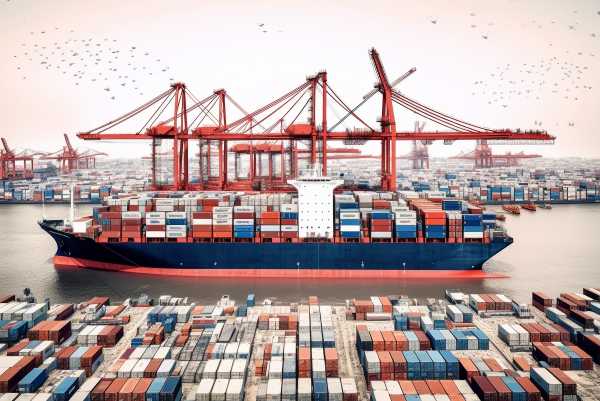
German Trade Surplus Widens on Imports Slide
Economic indicators from Germany continued to send recessionary signals. In December, the German trade surplus widened from €20.7 billion to €22.2 billion. Economists forecast a trade surplus of €18.8 billion.
The latest figures highlighted the weak demand environment plaguing the German economy. However, the devil was in the details.
According to Destatis,
- Exports declined by 4.6% month-on-month in December.
- Imports slid by 6.7% month-on-month in December.
- Compared with 2022, exports were down 1.4% in 2023, while imports slumped by 9.7%.
- Exports to EU countries fell by 5.5% month-on-month, with imports down 7.4%.
Trade with non-EU countries:
- Exports of goods to non-EU countries declined by 3.5%, with imports falling by 5.9%. Exports of goods to the US fell by 5.5%, with exports to China down 7.9%.
- Imports of goods from China tumbled by 8.5%, while imports from the US increased by 1.9%.
The latest numbers from Germany give the ECB more reason to consider an April ECB rate cut. A weakening German macroeconomic environment could impact the broader euro area economy.
EUR/USD Reaction to German Trade Data
Before the trade data, the EUR/USD rose to a high of $1.07865 before falling to a low of $1.07672.
However, in response to the trade data, the EUR/USD rose to a high of $1.07786 before falling to a low of $1.07747.
On Monday, the EUR/USD was down 0.10% to $1.07760.
Next Up: Euro Area and US Services PMIs
The Services PMI from Italy and finalized Services PMIs for France, Germany, and the Eurozone will garner investor interest. Upward revisions to preliminary numbers for the Eurozone could ease fears of a euro area recession. According to the preliminary survey, the Eurozone HCOB Services PMI declined from 48.8 to 48.4 in January.
However, investors must also consider producer price figures for the Eurozone. A larger-than-expected fall in producer prices could raise investor bets on an April ECB rate cut.
Economists consider producer prices a leading indicator of consumer price inflation. Producers reduce prices in a weaker demand environment to secure new business. Downward trends in producer prices dampen demand-driven inflationary pressures.
Economists forecast producer prices to decline by 0.8% month-on-month in December. Producer prices fell by 0.3% month-on-month in November.
Later in the session, the US economic calendar needs consideration. The ISM Non-Manufacturing PMI and Fed commentary could influence investor bets on a March Fed rate cut. Economists forecast the all-important ISM Non-Manufacturing PMI to increase from 50.6 to 52.0 in January.
FOMC member Raphael Bostic will also be in focus.









